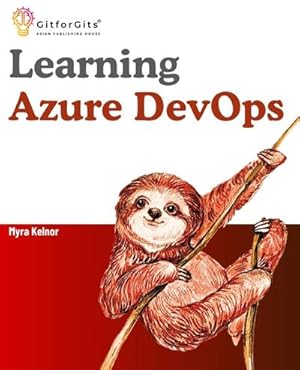gitforgits aug 2024 (2 Ergebnisse)
FeedbackSuchfilter
Produktart
- Alle Product Types
- Bücher (2)
- Magazine & Zeitschriften (Keine weiteren Ergebnisse entsprechen dieser Verfeinerung)
- Comics (Keine weiteren Ergebnisse entsprechen dieser Verfeinerung)
- Noten (Keine weiteren Ergebnisse entsprechen dieser Verfeinerung)
- Kunst, Grafik & Poster (Keine weiteren Ergebnisse entsprechen dieser Verfeinerung)
- Fotografien (Keine weiteren Ergebnisse entsprechen dieser Verfeinerung)
- Karten (Keine weiteren Ergebnisse entsprechen dieser Verfeinerung)
- Manuskripte & Papierantiquitäten (Keine weiteren Ergebnisse entsprechen dieser Verfeinerung)
Einband
- alle Einbände
- Hardcover (Keine weiteren Ergebnisse entsprechen dieser Verfeinerung)
- Softcover (2)
Weitere Eigenschaften
- Erstausgabe (Keine weiteren Ergebnisse entsprechen dieser Verfeinerung)
- Signiert (Keine weiteren Ergebnisse entsprechen dieser Verfeinerung)
- Schutzumschlag (Keine weiteren Ergebnisse entsprechen dieser Verfeinerung)
- Angebotsfoto (2)
Sprache (1)
Preis
- Beliebiger Preis
- Weniger als EUR 20 (Keine weiteren Ergebnisse entsprechen dieser Verfeinerung)
- EUR 20 bis EUR 40 (Keine weiteren Ergebnisse entsprechen dieser Verfeinerung)
- Mehr als EUR 40
Gratisversand
Land des Verkäufers
Verkäuferbewertung
-
EUR 67,80
Währung umrechnenKostenlos für den Versand innerhalb von/der DeutschlandAnzahl: 2 verfügbar
In den WarenkorbTaschenbuch. Zustand: Neu. Neuware -To help cloud professionals make the most of the Azure DevOps platform, 'Learning Azure DevOps' is a practical book that walks them through the process step-by-step. This book goes over all the bases of DevOps, including how to automate crucial tasks, deploy infrastructure as code (IaC), and set up and manage CI/CD pipelines.At the outset, the chapters will teach readers how to create Azure DevOps projects and link their repositories to VCSes like GitHub. Any application's build, test, and deployment processes, including Spring Boot's, can be automated with Azure Pipelines by configuring Pipeline as Code using YAML. To make sure that professionals can manage scalable, cloud-native apps, we also cover advanced topics like containerizing apps with Docker and deploying them to Azure Kubernetes Service (AKS). Using frameworks such as JUnit, Mockito, and Postman, the book goes even further into automated testing to guarantee quality assurance and continuous testing. It teaches to automate backup and disaster recovery procedures for resilient operations and to use Flyway to perform schema migrations.Additionally, teams are guided to work efficiently together through Azure Boards, shared pipelines, and centralized infrastructure management, highlighting collaboration. Also covered is Azure DevOps Analytics, which readers can use to keep tabs on their projects and teams' performance using real-time dashboards.Key LearningsIntegrate with Git for version control and set up Azure DevOps projects.Develop YAML-based Pipeline as Code to streamline the process of automating builds, tests, and deployments.Dockerize your apps and then launch them on AKS.Utilize Azure Boards and Project Boards to manage and monitor work items, tasks, and user stories.Add Postman, JUnit, and Mockito to your continuous integration pipelines to automate your application testing.Integrate Flyway into your Azure Pipelines to automate database schema migrations and achieve continuous delivery.Facilitate cross-team and cross-project cooperation by establishing shared pipelines and resources.Use Azure DevOps Analytics and performance insights for project management and monitoring.Deploy backups and failover procedures automatically in Azure DevOps.Use Terraform in conjunction with Azure Pipelines to deploy cloud-based IaC.Table of ContentGetting Started with Azure DevOpsPipeline as Code with YAMLContinuous Integration with Azure PipelinesContinuous Delivery with Azure PipelinesManaging Dependencies with Azure ArtifactsTesting and Quality Assurance with Azure Test PlansInfrastructure Automation with Azure PipelinesCollaboration and Team Management in Azure DevOpsLibri GmbH, Europaallee 1, 36244 Bad Hersfeld 202 pp. Englisch.
-
EUR 67,80
Währung umrechnenKostenlos für den Versand innerhalb von/der DeutschlandAnzahl: 2 verfügbar
In den WarenkorbTaschenbuch. Zustand: Neu. Neuware -For database developers, administrators, engineers, and backend developers, MySQL 8 Cookbook provides solution-focused recipes. This book takes a practical approach to solving real-world problems by showing readers how to increase database security, enhance performance, and fix common MySQL issues through the use of numerous examples.You will learn how to install, configure, and tune MySQL for optimal performance in Linux environments. Important topics like backup strategies, security measures, query optimization, high availability, and replication are covered in each chapter. You will learn to partition and index datasets in a way that improves query performance, and the book provides step-by-step solutions to help them manage big datasets. With the help of this book, you can convert MySQL into a schema-less database that can manage unstructured data with ease, and it even handles modern data types like JSON. You can build fault-tolerant and scalable database systems including the implementation of multi-source replication, master-slave replication, and master-master replication.Problems like table corruption, excessive CPU and memory usage, deadlocks, and replication lag are addressed in the troubleshooting sections. Also shown are methods for automating and monitoring database security using Linux tools, cron jobs, and MySQL's performance schema. Whether you're managing enterprise databases or developing backend applications, this book will teach you to improve your database management skills and ensure peak performance for systems that are critical to business.Key LearningsDiscover the ins and outs of installing, configuring, and optimizing MySQL 8 for high-performance database systems.Maximize database availability by implementing advanced replication setups, including master-master and multi-source.Take advantage of partitioning and indexing techniques to efficiently manage massive datasets and improve query performance.Use MySQL's relational and NoSQL features in combination to manage dynamic and schema-less data using JSON support.Use cron jobs and Linux-native tools to automate backups, recovery, and security audits.Find the cause of MySQL problems like table corruption, deadlocks, and replication lag and fix them.Implement strong firewall settings, encryption, and user access control to protect your MySQL environment.Use memory tuning and full-text search indexing to optimize MySQL performance and speed up queries.Use MySQL's performance schema in conjunction with Linux tools to keep an eye on system performance and resource usage.Table of ContentInstalling and Configuring MySQL 8Optimizing MySQL Architecture and Storage EnginesSecuring MySQLOptimizing Queries and PerformanceConfiguring MySQL ReplicationEnhancing MySQL High AvailabilityAutomating MySQL Maintenance and UpdatesAdvanced MySQL Troubleshooting and DebuggingMonitoring and Tuning MySQL PerformanceLibri GmbH, Europaallee 1, 36244 Bad Hersfeld 238 pp. Englisch.



